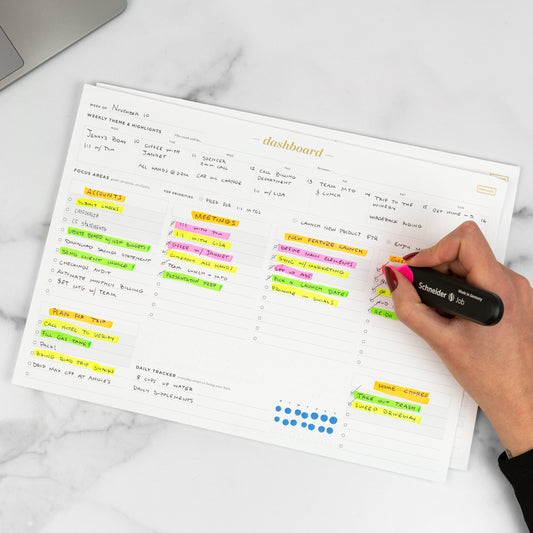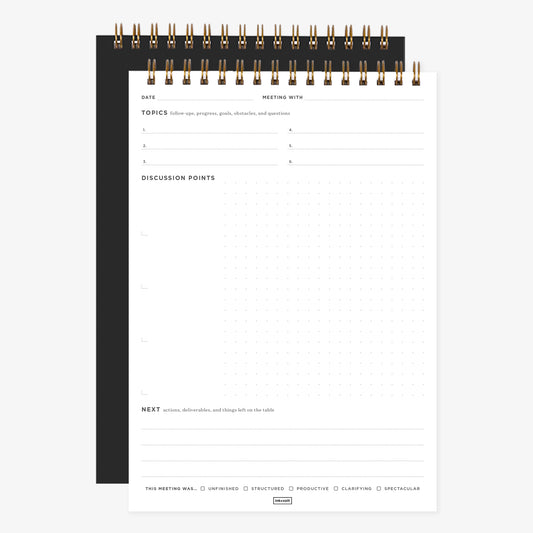Becoming a freelancer has been my favorite working adventure to date.
It’s similar to but simpler than running a business, gives me autonomy and choice in work I take on, but also affords me freedom from the responsibilities of being part of a larger entity. I chose to become a freelancer at a time when I knew I had enough savings to support myself “figuring it out”, a couple of standing retainer clients that provided reliable work, and enough in my portfolio to secure new business.
But being a freelancer is by no means the easy way out.
Freelancing is as much work as you make it – and if you forgo initial planning, you’re setting yourself up for a tougher time. These five tips are distilled from what feels like volumes of personal perspective on freelancing.
In implementing these tips, you’ll be set up to grow your list of clients, keep administrative work to a minimum, and create space to enjoy the creative freedom that comes with freelancing.
1. Build a solid foundation
Depending on how you’re setting up your freelancership, as a business or as a side income generator, it’s important to be aware of the financial and tax laws where you live. It’s important to know your rights and responsibilities as an individual in business.
Treating the income you earn separately from the rest of your finances will help you in many ways: you’ll more easily spot trends in your earnings over time, see what services or packages are most profitable versus most provided, have the financial security to pay yourself and grow your offerings, and much more.
To build a solid foundation, look at your freelancing like a business.
- Get a business bank account. It’s easy to establish a business checking (and savings) at the same bank where you conduct personal banking, though it’s smart to compare monthly fees, customer service offerings, and benefits for banking with that institution versus others. Another benefit to having your account at the same bank as your personal account is that you can “pay yourself” from your business account with easy, no-fee transfers.
- Subscribe to an online financial management software. There are numerous companies that integrate your bank account information into a monitoring system where you can see transactions, send invoices, categorize your spending (for tax purposes), and a plethora of other options. Compare, compare, compare!
- Set up a tax preparation account, regardless of the time of year. No matter the means by which you earn freelance income, taxes come into the picture. Each month, you’ll want to set aside a portion of your freelancing income for your taxes, so you don’t have a surprise bill at the end of the year. By having your tax preparation set up, you can easily log-in, import your information from your financial management software, and be out the door early come tax season for far less than it would cost to hire a professional.
2. Determine your expectations and communicate them
Contracts are an absolute must. No matter your industry, setting written expectations for your engagements and recording them in a mutually signed contract keeps everyone informed, aware, and protected.
The apparent inclusions to a contract might include: contract parties, duration of the contract, services or deliverables provided, cost and payment structure, liability clauses. Do a quick search your field or specialty and add “contract template” to your query to find a wealth of free resources and templates to get you started.
Expectations are more precise and are the things that often go unnoticed until they become a problem. If you’ve ever worked with someone who has become upset with you seemingly without cause, or if you’ve had a boss tear your head off about failing to reply to an email promptly, you’ve been impacted by miscommunicated expectations.
Here are some expectations to communicate preemptively to ensure you fit seamlessly with your client and their team:
- Your hours of availability for phone calls
- Your typical response time for emails
- Your expectation for being introduced to team members and copied on emails; whether you want to be or not, whether your messages may be shared or not
- Your expectation for their response to your communication, especially regarding deliverables, deadlines, publishing activities, and other activities that may require review or approval before more forward
- Your payment timeline and consequences for late or nonpayment
- Your expectation for their use of your deliverables, including licensing, attribution, and reselling to other entities without your consent or involvement
- Your hard limits on meeting schedules and times, revisions to deliverables, and how much you’re willing to provide beyond the scope of the contract
Activity: Make a journal entry where you revisit instances where either your expectations or that of someone involved in your project were not met and what that experience felt like. Explore ways to mitigate these discrepancies and create future solutions for when you and your clients might not meet eye-to-eye.
3. Get organized and stay organized
The state of your bed is the state of your head. – unattributed Indian adage
Even accomplished, tenured freelancers can find themselves inundated with unnecessary paperwork, black holes of old files, and a generally messy state of affairs. Monthly, at the very least, take time to purge and organize your spaces.
Because you can no longer just “leave your work at the office”, everywhere you sit to think, work from your laptop, read, journal, and hope to have any creative output becomes your office.
Organizing your “office”
This tactic may or may not work for you, but I have found that keeping a ‘mobile office’ has made me more productive, more flexible, and less mentally encumbered by clutter. I’m a laptop freelancer who enjoys working from cafes, co-working spaces, and at home all the same.
Here’s what I keep in my mobile office:
- Planner
- Extended brain (journal)
- Pens, pencils, markers
- Computer glasses
- Screen cleaner cloth
- Bluetooth mouse
- Lip balm
- Computer charger
- Headphones
- Metal tea ball and tea (so I’m not always buying coffee)
- Reusable cutlery
Save for the notebooks, all of that fits in a small drawstring pouch that measures 4 inches in diameter by about 8 inches tall. My laptop, notebooks, and this bag are all I need to work productively anywhere. I use the same items at my home desk as I use when I’m working from an airport, cafe, or outside, which helps me keep my home office streamlined too.
Organizing your digital spaces
Quietly raise your hand if you have more than 20 icons on your desktop. (raises hand)
Your computer files are simply more sophisticated and digitized versions of the filing cabinets you remember from the old days. Those cabinets were alphabetized, categorized, numbered, divided into folders, and made to be as efficiently scannable as possible. It’s time we treat our digital space with the same care.
Here are five steps to get you started with a digital makeover:
- Separate your personal documents from your freelance business documents
- Ensure that client documents are organized by client, and consider organizing by year
- Documents (of any format) that are not related to clients or contracts but still related to freelancing (like blog transcripts, website photos, etc.), try organizing them by category, by platform, or campaign/call-to-action
- Consider a computer program that scans and finds duplicate files in your computer, which can be purged quickly and save lots of space
- When downloading, importing, or creating new files, devise a naming system, illustrate it, and stick with it. Consider including the client or campaign name, the abbreviation for its designated distribution platform, the date, and the contents.
The key to organization is staying organized. Continuing to invest time and understanding into streamlining your organizational methods will help you grow into a more graceful, ‘together’ freelancer.
A client can tell when I’m disorganized – I may be less prompt or thorough in answering emails, I have to ask more than once for a document to be sent from their team to me, I may drop small commitments and find myself apologizing after the fact. These situations, when infrequent, rarely make or break a commitment. But, they are not oft forgotten.
4. Prepare for growth and go for it
As a beginning freelancer, it can be easy to simply say “Yes!” to any new clients or contract opportunities, even agreeing to things slightly outside your normal scope or in a realm that you don’t inherently love.
I had a lot of trouble with this early on because I wanted to feel successful, so I wanted to be booked. But as I’ve grown (and I’m sure as you do too), you’ll start to choose more carefully the work you want to do and what strategic choices to make to further tailor your freelance career to be how you want it.
GROWTH IN FREELANCE ISN’T JUST ABOUT MORE CLIENTS OR MORE MONEY. Growth is about how you grow as a professional and how you want your business to grow with your life.
Would you like to only do a specific type of work? What about moving up the ranks to only provide high-end services? Do you dream of hiring an assistant or contracting less interesting work to other freelancers for a small fee?
So many of these dreams (and more) can be achieved through probably growth planning.
Set short and long-term goals
Short-term goals can be as short as end-of-today or as long as 3 – 6 months. Long-term goals range from 6 months – 5 or 10 years, depending on how seriously disciplined you are with your planning.
I like to set goals based on:
- what kind of work I want to spend my time doing
- what kind of income I need to generate for myself, my family, and overall growth
- what kind of impact do I want to make through my work
Regularly review your financial statements, client communication and survey results, and project outcomes to illuminate trends that may be occurring in your business.
If you find yourself constantly frustrated with a client or with clients from the same industry, look at how you can either change your perspective or move away from those clients to serve a more fitting group.
Project outcomes can be your finished work and portfolio, your personal journal where you record daily happenings, or the performance data of your deliverables over time. It is up to you to figure out what is most important to measure and how best to measure it.
What work excites you, makes you passionate and fired up each morning? What work did you dread or do you look back on and see that it wasn’t your best? These trends can help you see how “trimming the fat” in your freelance roster (i.e. clients that aren’t a good fit, work you don’t love or aren’t good at, services that don’t pay as well as others) can lead to a happier freelance career and a more joyful work experience.
Set goals based on those trends, informed by actual data and experience, and make them concrete by putting their milestones in your calendar.
5. Do your job even when you have no clients
While I don’t expect you to be sitting around very often, twiddling your thumbs and hoping an email comes through, there will always be lulls and downtime in the freelance realm. You will finish a big deadline and have a week or two of only light work. You may find yourself between retainers and worried that the lack of immediate work will lead to your failure.
Don’t fret! This time is perfect for doing some of your best work.
Show of hands: who loves to download freebies, eBooks, and one-pager worksheets?
If you aren’t already, getting in on this creative action is a major bonus to your freelance portfolio. How can you generate interest in what you do, to a wider audience than you have now? How can you make contact with clients who need your services?
Have you thought about ways you could streamline your process when dealing with clients? Or, have you noticed that some jobs turn out very similarly and could be templatized?
Taking time each month to create new products or streamline solutions for your business, yourself, your clients, and your audience (those followers who loyally like your posts, comment on your blog, or simply tell you in the grocery store that they loved your latest work), brings you credibility in ways many freelancers take for granted.
Remember: the way to ensure success as a freelancer is to stay active. When you aren’t working with clients, you should be working to make yourself a more valuable asset to your current and future clients. Taking online classes or webinars, attending networking events, creating valuable content. These worthy investments in your freelance career and in your personal brand will make it easier to find, secure, and stay connected with clients that fit your preferred work style.









